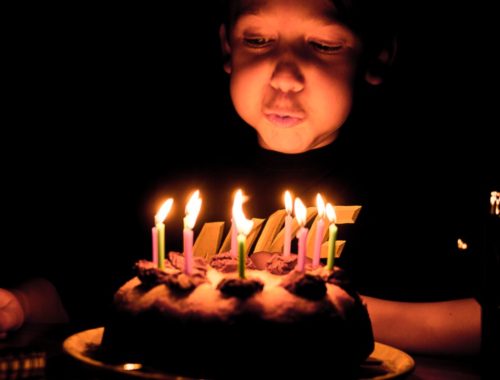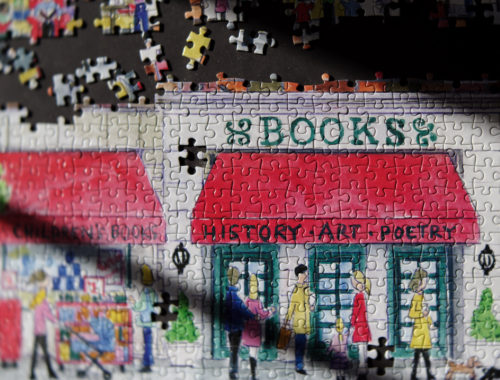
Learning New Languages
After publishing last week’s post, I received an email from a reader, asking for clarification. I sent a response and would like to share and expand upon it here.
I mean that the language we use—literally and figuratively—creates the world we live in. For instance, I used to equate “Catholic” with “good person” and “Protestant” with “someone who is not quite,” and that affected how I interacted with them and what kind of relationship would develop. Where did that originally come from? My mother, who learned that language from her immigrant Italian parents and the neighbors in the Italian section of the small mill town she grew up in. She also learned it from the way she and her family were treated by some of the non-Catholics in town.
But it’s not just the words we use. It’s everything we bring into our lives/selves. If a person watches nothing but action movies and horror flicks, spends hours in front of the TV and online, and never reads a book, the world will look different to them than it does to me, as I have not watched anything on TV in years (not counting the snippets of golf and other sports my husband and sons sometimes tune into). The few commercials we do catch leave Dennis and me agog and wondering how anybody can live in that world. What’s more, the amount of time I spend online now might total three hours on any given day. What I take in there is not as carefully selected as I would like (too many reels on Instagram hold my attention for too long), but I actively try to avoid the Internet, which is not as difficult as you might imagine when you pick up your cell phone only once or twice a day.
So, you may or may not remember that I got serious about rebuilding my life a year and a half ago because I finally figured out that I have an emotional eating disorder. As I alluded to last week, I did not then realize that I was adding to and changing the language with which I create my life. Part of that involves buying and reading books by people I’d never even heard of two years ago. One is It’s Not About Food by Carol Emery Normandi and Laurelee Roark. I’m about at the halfway point and already wishing I had picked up a copy years ago, but on the other hand, I wonder if I would have been open to a change in language then. It’s Not About Food deals with compulsive eating, anorexia, and bulimia: different problems caused by the same factors: self-betrayal, shame, fear, emotional or physical abuse, and constant messages about doing it wrong or never being good enough. While I would classify my disorder as fear of food, many of the same causes apply.
Here’s some irony for you: when I was in tenth grade, I wrote a term paper on anorexia and bulimia. I still have it, and this is what my teacher (a woman who had taught English at the high school for 30 to 40 years) wrote on the cover: “A++ What can I say, Cheryl? This is perhaps the most astute paper done as a sophomore. Intelligently handled, excellent sources of info, and an overall command of the assignment. I am indeed proud and awed. A joy to teach you!” (See why I kept it?)
Yup, I had an eating disorder of my own (there were symptoms back then), but it took me nearly 40 years to figure that out. Like I’ve said more than once, I’m a great student but a slow learner.
A picky eater as a child, I developed food sensitivities and allergies left, right, and center in adulthood, and I can now see that these issues always seemed to pop up when I was with people who emotionally abused me or when I was faced with uncomfortable situations. Since I couldn’t control how others treated me (couldn’t even see that my shredded self-esteem was caused by them), I controlled—by limiting—the foods I could eat, which in turn limited the ways in which I could socially interact with people. And I want to be clear: this was not “in my head.” My symptoms and allergies were/are very real. In fact, they are my body’s way of protecting me. I understand that now, because I’ve been learning its language, and doing so is making all the difference.
Each of the chapters in It’s Not About Food includes numerous testimonials from women who have struggled with eating problems most of their lives, and while every story is heartbreaking and important, I’ll share just this, from a woman named Susanne:
When I started to get in touch with the real reason I hated my body so much, the feelings of deep-seated, through-and-through shame about my body was the feeling that came up the most. Following it back to my adolescence, I remembered at that time my older brother started teasing me about starting to grow breasts. Before that age I was welcomed in my brother’s baseball games, but as soon as I started looking too much like a girl, I was no longer able to play with the guys. My mother started to treat me differently, as well, by keeping a closer eye on me. My father withdrew from me and wouldn’t hug or kiss me as much as he always had. Boys and men started to yell remarks at me as I walked down the street. I lost my individual identity, my freedom, and my enjoyment of my body. I started to hate the way my body looked and the only thing that made me feel better was to stop eating. I was starving myself, but at least I got rid of my breasts and thighs.
I could tell stories of my own about the things said to me after I started to develop breasts bigger than any of my classmates’, many of these remarks made by male teachers and my older brother’s friends. I dealt with all of that as best I could—which often meant wearing a black t-shirt over a bathing suit whenever I went swimming in mixed company—but it took this book to make me realize how critical of my body I have been. Now, I’m trying to remember to say things like, “Thank you, body, for taking such good care of me.” And instead of looking in the mirror and saying something like, “My hips are enormous,” I remind myself that these hips protected and brought into the world two marvelous girls and four equally splendid boys, and for that, I am forever grateful.




